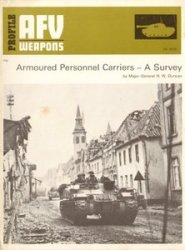Vietnam alone has 60 distinct groups that account for 16 percent of the total population. The highland H’mong, T’ai and Lao-Theung comprise 40-50 percent of the population of Laos.
The Vietnamese communists cemented relations with a number of these groups during the war with France. In the late 1950s they used Montagnards to scout the Ho Chi Minh Trail, and one of the first incidents of the Vietnam War, the Tra Bong uprising of March 1959, involved minorities in South Vietnam’s Quang Ngai province. The communists also cultivated the minorities in Laos because so much of the Trail passed through mountains inhabited by them. Meanwhile, the government of Ngo Dinh Diem alienated the hill people by encouraging ethnic Vietnamese to settle in highland areas. Montagnard rebellions against the Saigon government 1964—65 were ended by American mediation, and US Special Forces and aid officials acted as patrons of the Montagnards for much of the war. As the Americans withdrew, turning over their responsibilities to the South Vietnamese, relations between the Montagnards and Saigon deteriorated. Some Montagnards shifted support to the communists; others continued an armed opposition to the communists in Lam Dong province after Saigon fell. Out of South Vietnam’s approximately
1,000,000 ethnic minority citizens, about 200,000 died in the war. WST. See also civilian irregular DEFENCE group; FULRO.

“Monty” with Eighth Army, 1943
Montgomery of Alamein, Field Marshal the Viscount (1887—
1976). Br. First came to public attention as Commander 3rd Division and then II Corps in the retreat to Dunkirk in May 1940.
In August 1942, he was selected by Churchill to command the defeated Eighth Army at El Alamein. He restored its confidence, and gained ascendancy over Rommel and over his own subordinate commanders through the professionalism with which he won the Battles of Alam Haifa and El Alamein. His success was based on meticulous planning; fighting divisions as divisions and not in ad hoc groupings as had so often happened in previous Western Desert battles; maintaining balance at all times so that he could react to the unforeseen and never court disaster; and, above all, ensuring that every man knew what was intended and what part he was to play. His pursuit of Rommel into Tunisia may have seemed ponderous, but he was determined not to be defeated as Wavell and Auchin-leck had been due to logistic overstretch. Eighth Army remained victorious throughout the Tunisian, Sicilian and Italian campaigns until he returned to England in December 1943 to prepare for the invasion of Northwest Europe as Commander, 21st Army Group.
The campaign in Normandy was a triumph for his strategy of drawing the German panzer formations towards the British-held eastern sector of the beachhead, enabling the Americans to break out in the west. His handling of subsequent disagreements with Eisenhower did him little credit. Right though he may have been to advocate a concentrated thrust by his 21st Army Group into northern Germany, he was wrong not to appreciate that such a policy was politically impossible for Eisenhower. The failure of his thrust to Arnhem in September, and his tactlessness during the Ardennes crisis in December 1944, almost led to his dismissal. Nevertheless, his crossing of the Rhine in March, and his advance to Liineburg Heath where he accepted the surrender of all German forces in the Northwest on May 4 1945,
Crowned his war-time career.
After the war, he fought to establish a sound structure for Western European defence, retiring in 1958 as Deputy Supreme Allied Commander, Europe. WGFJ.
Montreuil. Home of the giiq of the REK in France, 1916-19.
“Moolah” Operation. Mounted in 1953 towards the end of the Korean War. The objective was to persuade a pilot to defect with a MiG by offering a large reward. The word was spread by leaflet and radio in Korean, Chinese and Russian without immediate results. After the armistice a North Korean MiG arrived at Kimpo airfield, but the defecting pilot knew nothing about the reward.
Moore, Maj Gen Sir (John) Jeremy (b. l928). Br. Royal Marines officer commanding Land Forces, Operation “Corporate” (Falklands War 1982). Moore landed in the Falklands with 5th Infantry Brigade and was responsible thereafter for all operational and logistic matters ashore. He took the surrender on June 14.
Morane-Saulnier MS 406 C 1
(French, WWII). Single-seat fighter. Prototype (MS 405) flew August 8 1935; initial production batch April 1937; deliveries from December 1938. At outbreak of war Armee de VAir had 573 MS 406s on charge, 24 escadrilles equipped, but type was inferior to Messerschmitt Bf 109. Thirty to Finland 1939; 15 fitted with captured Klimov M-105P engines, designated Morko Moraani, in service until 1952. One 860hp Hispa-no-Suiza 12Y31 engine; max. speed 289mph (465kph); one 20mm cannon, two 7.5mm machine guns.
Morane-Saulnier Parasol monoplanes (French, WWI). Two-seat reconnaissance. Prototype flew August 1913; first production version, Type L, supplied to French Aviation militaire, rfc, rnas, Russia, 1914—15. Flown as single-seat fighter by Roland Garros, with forward-firing machine gun, April
1915. Developed via refined Type LA to llOhp Type P of 1916. Operational use in rfc ceased January 1917. On Type L No. 3253 of No. 1 Wing, RNAS, Fit Sub-Lt R A J Warneford’s vc action June 7 1915. One 80hp (in Type P, llOhp) Le Rhone engine; max. speed 77/ lOOmph (123/160kph); one/two 0.303in machine guns, small load bombs.




 World History
World History









